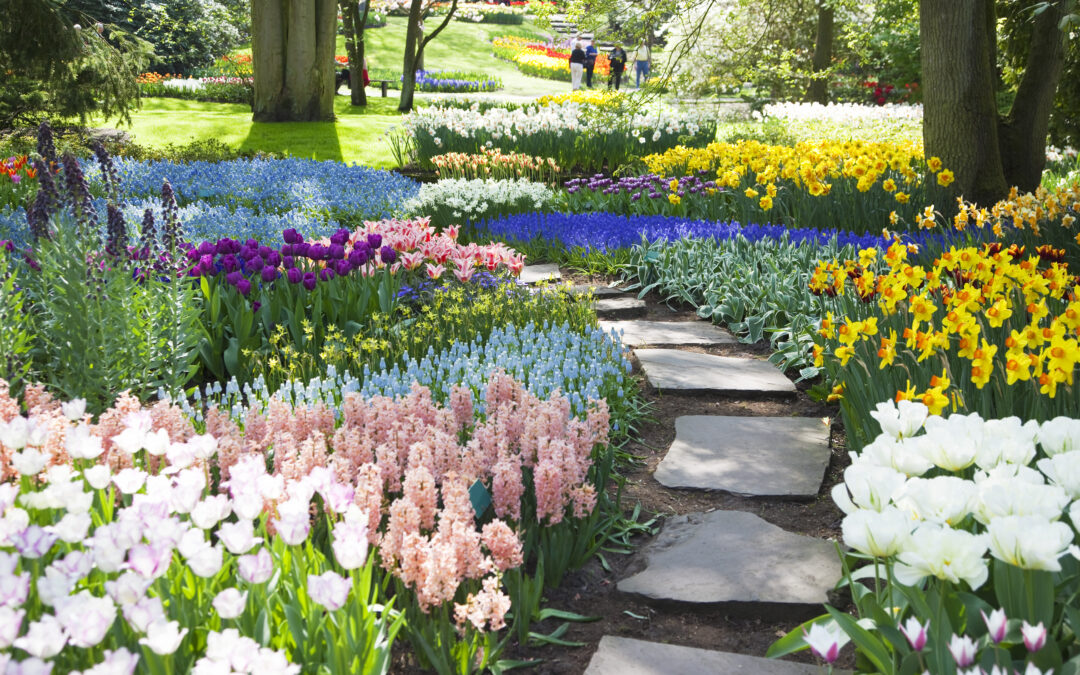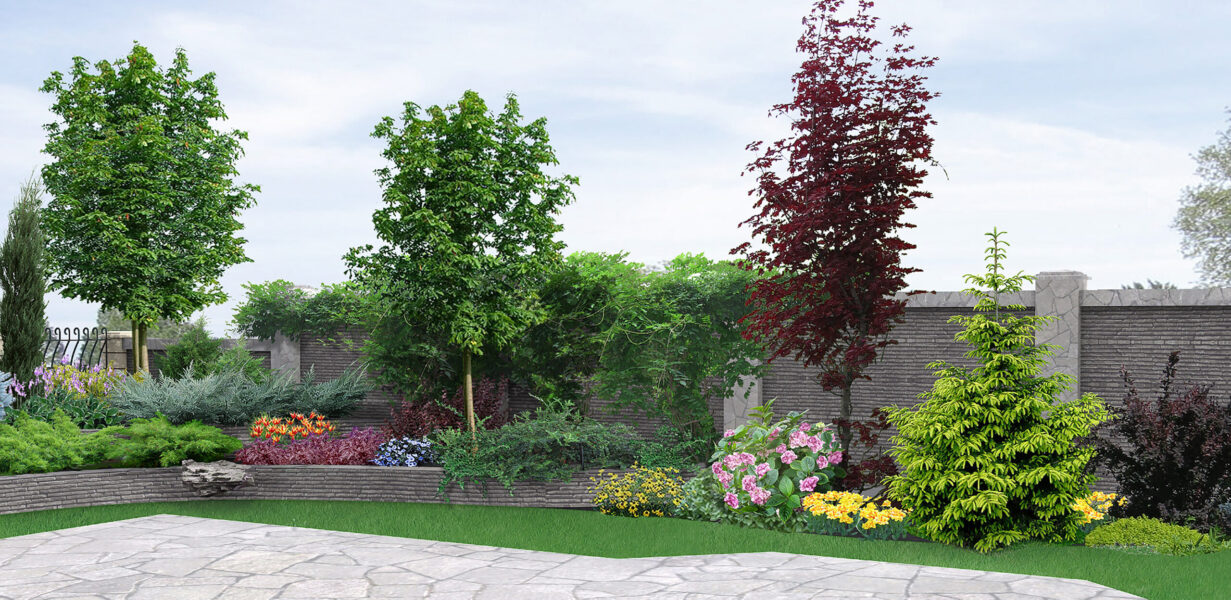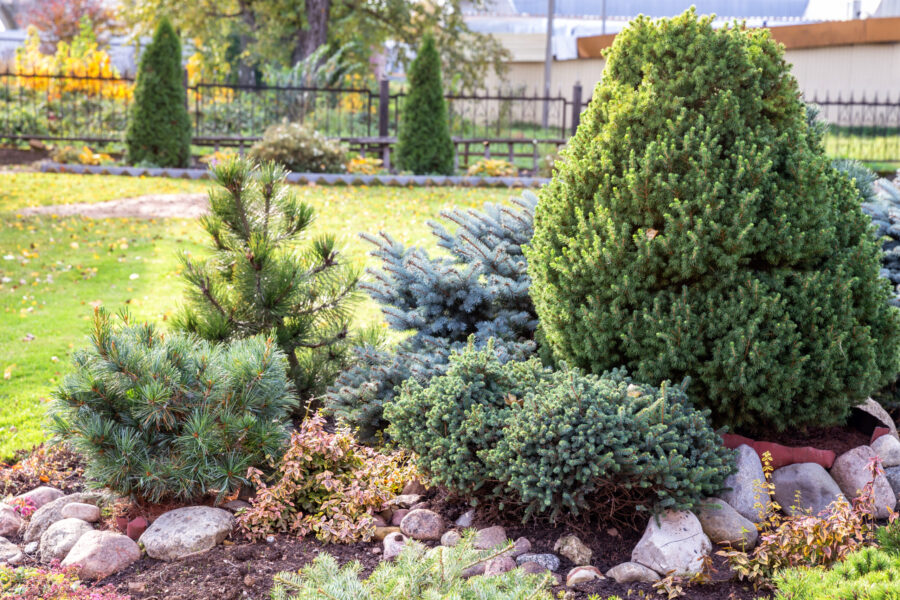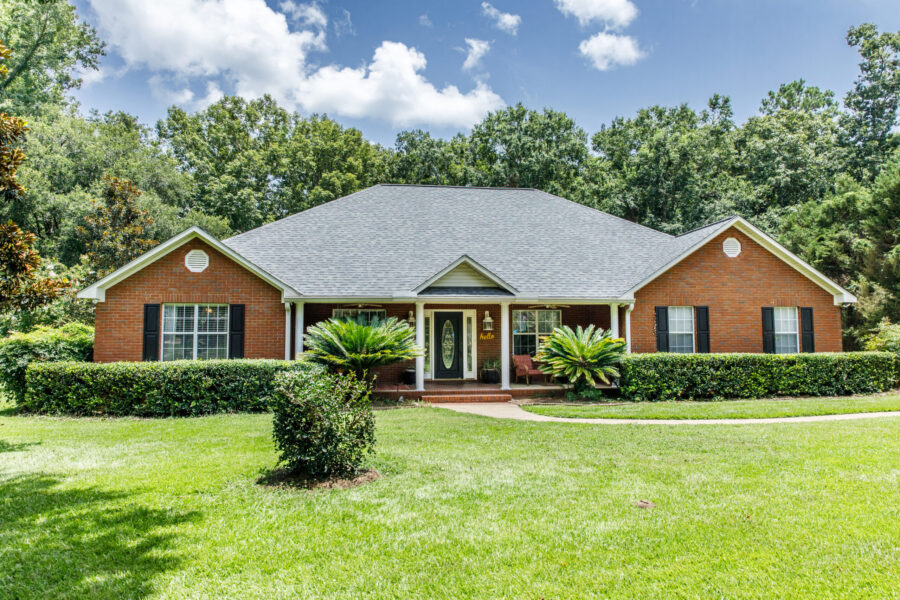When you create a garden, you want to pick just the right colors, height, and foliage. You also want to consider the soil, amount of sunlight, and the care that is needed. You are truly an artist in your own garden. Creating a landscape can sometimes be a daunting task. Check out some of these helpful tips for each plant selection:
- Types of Trees – Planting a tree in your yard is a big decision. If you select the wrong tree or location, it can be burdensome to remove and transplant. Here are some of the type of trees you have to choose from: flowering trees, fall-foliage trees, fast-growing shade trees, evergreen trees and dwarf trees. Many trees are slow at growing, so you want to make sure you pick a tree that will really compliment your yard.
- Garden Shrubs — Like trees, shrubs can be put in the following categories: flowering shrubs, fall color shrubs, fast-growing shrubs, evergreen shrubs. Also, the right shrub is often chosen based on how they are used. They can be picked for foundation plantings, to add charm of your house and add curb appeal. Roses are very popular and used as a shrub on their own. The greatest benefit of shrubs is that they can be low maintenance.
- Plant Selection for Vines — Vines are also classified based on how they are used in landscaping. Vines are invasive plants which means they tend to grow where you don’t want them to—you need to work with them in your landscape. They can be beautiful, but pesky, too.
- Types of Ground Covers – Some ground covers are foliage plants; that is, they are not known for putting on big flowering displays, but they have pretty or colorful leaves. One of the reasons for placing ground covers in your garden is to control erosion and thwart weeds. A very popular ground cover for landscaping on a hill that falls into this group is Blue Rug Juniper. But many homeowners want more from a ground cover. They demand that it bloom and help prevent soil erosion at the same time.
- Kinds of Perennials – The great part of perennials is as noted by their name, they come up year after year which is great for low maintenance gardening. Perennials can also be put in categories such as: tall perennials, like hibiscus, short perennials, and long-blooming perennials. Many of the pretty cottage garden plants are perennials.
- Types of Annuals – The common use for annuals are for bedding plants, decoration, and providing beautiful spots of colors. You must plant annuals based on sun and shade preferences. Red salvia is an example of a sun annual and impatiens are an example of a shade annual. Location and water requirements are key for annuals.
- Other Considerations for Plant Selections – You must also consider your region, soil type, and animal and insect control. For example, Lamb’s Ear will keep away deer and is also good for droughts but can be invasive if not restrained.
Not only do you want to make your garden look beautiful, you must be practical to determine the best plant selection. You may have to tap into your inner scientist.
Here are some tips for starting your garden on the more practical side:
- Assess Your Outdoor Space – Use a tape measure, piece of paper and pencil to look at your total space. Once you are happy with your garden design, scale your plan of where your flower bed should be, plant borders and their size.
- Soil Type – See what type of soil you have loose, sandy soil is more ideal. You may be in a region that has more clay soil. You can also buy simple pH test soil kits in most good garden stores, which are easy to use and provide useful information to base your planting plan.
- North-Facing vs. South-Facing Gardens vs West-Facing and East-Facing Gardens – Look at where your garden faces. North-Facing gardens can support these types of plants–Hydrangea petiolaris, Sarcococca confusa, Mahonia vars, Liriope muscar, Hosta vars. South-Facing gardens can support these types of plants–AgapanthusHeadbourne Hybrids, Allium vars, ornamental grasses, Salvia nemerosa ‘Caradonna’, pelargoniums, lavender, and poppies.
West- and east-facing gardens can support most plants as they provide sunlight without getting as hot as south-facing gardens.
Choose plants for sunny and hot patios and look for plants that can be out in the sun all day. Lavandula, salvia, penstemon, roses, geraniums, verbena, marigolds, and herbs all like sun.
- Make a Successful Planting Scheme – Look at plants that will do well with sun exposure and use attractive and low maintenance plants. Also, remember your evergreens which can add a calming backdrop all year round.
When you consider items like sunlight, soil, space and the right type of plants you get healthy and attractive plants. Plants establish quickly, growing and bulking up, produce healthy root systems, and steady top growth and resist and withstand insects, animals and disease. Paying attention to your garden takes creativity and good old practical science; but the results will be beautiful! Aisling View can help you with your planting and landscaping needs. Call us at 317-636-9408 to find out how we can bring out the best in your garden.
Are you on Facebook? We are, too. Let’s be friends!







Recent Comments